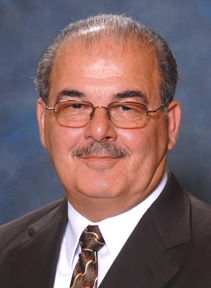The Railroad Retirement Board (RRB) is required by law to submit annual reports to Congress on the financial condition of the railroad retirement system and the railroad unemployment insurance system. These reports must also include recommendations for any financing changes which may be advisable in order to ensure the solvency of the systems. In June, the RRB submitted its 2010 reports on the railroad retirement and railroad unemployment insurance systems.
The following questions and answers summarize the findings of these reports.
1. What were the assets of the railroad retirement and railroad unemployment insurance systems last year?
As of September 30, 2009, total railroad retirement system assets, comprising assets managed by the National Railroad Retirement Investment Trust and the railroad retirement system accounts at the Treasury, equaled $24.6 billion. The Trust was established by the Railroad Retirement and Survivors’ Improvement Act of 2001 to manage and invest railroad retirement assets. The cash balance of the railroad unemployment insurance system was $47.6 million at the end of fiscal year 2009.
2. What was the conclusion of the 2010 report on the financial condition of the railroad retirement system?
The conclusion was that, barring a sudden, unanticipated, large drop in railroad employment or substantial investment losses, the railroad retirement system will experience no cash-flow problems during the next 23 years. The long-term stability of the system, however, is not assured. Under the current financing structure, actual levels of railroad employment and investment return over the coming years will determine whether additional corrective action is necessary.
3. What methods were used in forecasting the financial condition of the railroad retirement system?
The valuation projected the various components of income and outgo of the railroad retirement system under three employment assumptions, intended to provide an optimistic, intermediate and pessimistic outlook, respectively, for the 25 calendar years 2010-2034. The projections of these components were combined and the investment income calculated to produce the projected balances in the railroad retirement accounts at the end of each projection year.
Projecting income and outgo under optimistic, intermediate and pessimistic employment assumptions, the valuation indicated no cash-flow problems occur throughout the 25-year projection period under the optimistic and intermediate assumptions. Cash-flow problems do occur under the pessimistic assumption but not until 2033, 23 years from now.
4. How do the results of the 2010 report compare with those of the 2009 report?
The projected combined account balances are higher through calendar year 2025 under each employment assumption than in last year’s report. Under the optimistic and intermediate employment assumptions, the account balances are lower at the end of the current projection period due to lower taxes in some earlier years.
The favorable comparison with last year was largely due to actual investment return of approximately 24.3 percent exceeding the expected investment return of 7.5 percent in calendar year 2009, and to a lesser extent due to a lower estimated cost-of-living adjustment for 2011 in this year’s report. This was offset by lower projected employment and a lower estimated wage increase for 2009 in this year’s report.
5. Did the 2010 report on the railroad retirement system recommend any railroad retirement payroll tax rate changes?
The report did not recommend any change in the rate of tax imposed by current law on employers and employees. The absence of projected cash-flow problems for at least 23 years under each employment assumption indicated that an immediate increase in the tax rate schedule is not required.
6. What were the findings of the 2010 report on the financial condition of the railroad unemployment insurance system?
The RRB’s 2010 railroad unemployment insurance financial report was also generally favorable. Even as maximum benefit rates increase 39 percent (from $64 to $89) from 2009 to 2020, experience-based contribution rates are expected to keep the unemployment insurance system solvent, except for short-term cash-flow problems in 2010 and 2011 under all assumptions. However, projections show a quick repayment of any loans even under the most pessimistic assumption.
Unemployment levels are the single most significant factor affecting the financial status of the railroad unemployment insurance system. However, the system’s experience-rating provisions, which adjust contribution rates for changing benefit levels, and its surcharge trigger for maintaining a minimum balance help to ensure financial stability in the advent of adverse economic conditions.
Under experience-rating provisions, each employer’s contribution rate is determined by the RRB on the basis of benefit payments made to the railroad’s employees. The report predicted that, even under the most pessimistic assumption, the average employer contribution rate remains well below the maximum throughout the projection period.
The report also predicted that the 1.5 percent surcharge in effect in calendar year 2010 will be followed by either a 2.5 percent surcharge under an optimistic assumption or a 3.5 percent surcharge under the intermediate or pessimistic assumptions for calendar year 2011. Under all assumptions, a 2.5 percent surcharge is predicted for calendar year 2012. A surcharge of 1.5 percent for calendar year 2013 is likely only under the pessimistic assumption.
7. What methods were used to evaluate the financial condition of the railroad unemployment insurance system?
The economic and employment assumptions used in the unemployment insurance report corresponded to those used in the report on the retirement system. Projections were made for various components of income and outgo under each of three employment assumptions, but for the 11 fiscal years 2010-2020, rather than a 25-year period.
8. Did the 2010 report on the railroad unemployment insurance system recommend any financing changes to the system?
No financing changes were recommended at this time by the report.
(The preceding release was issued by the Railroad Retirement Board on August 17, 2010.)
